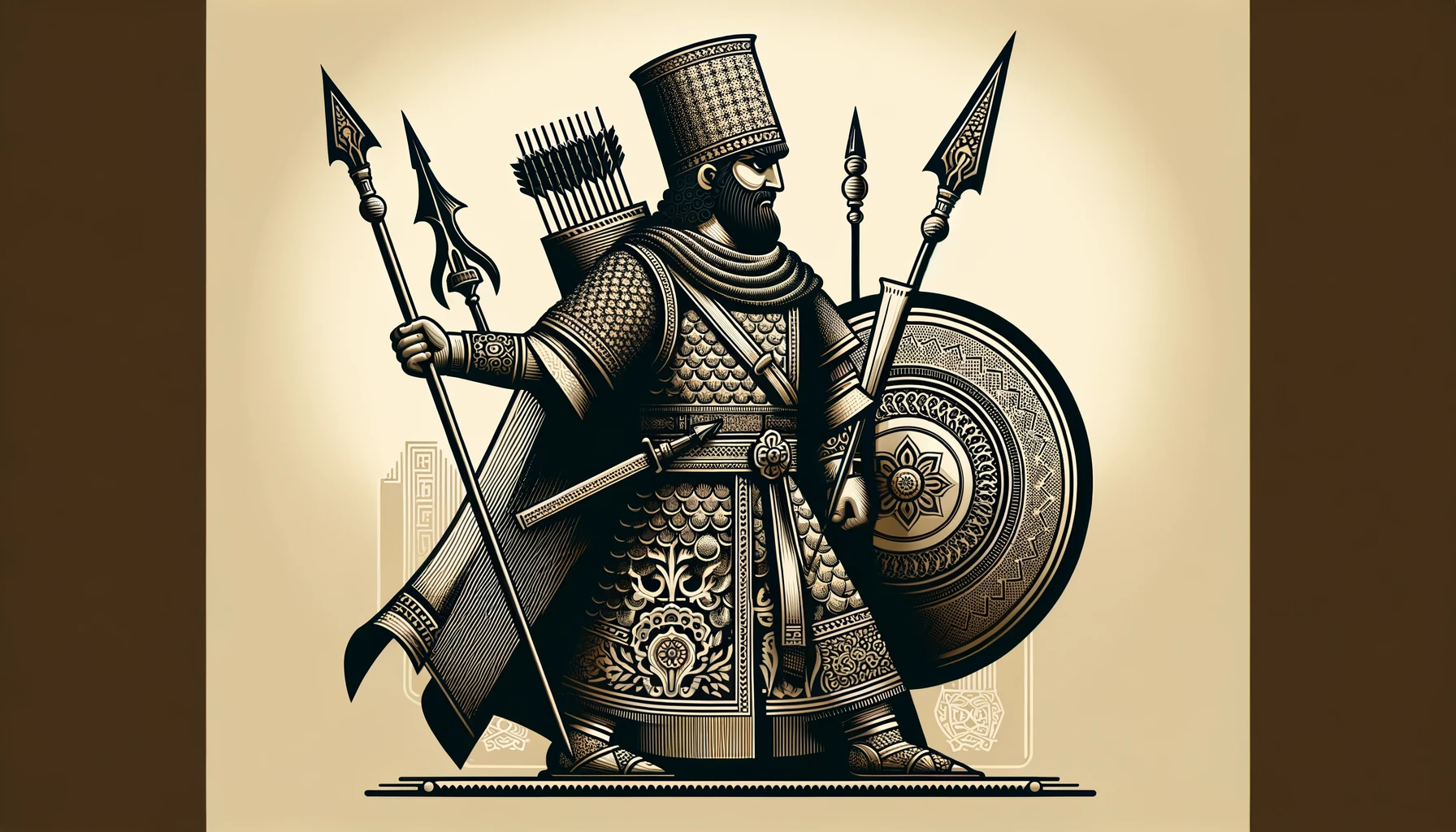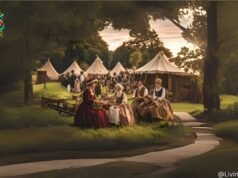Persian Civilization: The Splendor of Modern-day Iran
Introduction to Persian Civilization
The Persian Civilization, with its origins dating back to 550 BCE, stands as one of history’s most influential and enduring empires. From the Achaemenid to the Sassanian dynasties, it spanned continents, encompassing a diverse range of cultures, languages, and religions. This article explores the grandeur of Persian civilization, highlighting its contributions to world history and culture and the enduring legacy that continues to fascinate scholars and enthusiasts alike.
The Origins of Persian Civilization
Early Inhabitants and Achaemenid Dynasty Foundation
Persian civilization began with the establishment of the Achaemenid Empire by Cyrus the Great. Rising from the Iranian plateau, Cyrus unified the Medes and Persians, laying the foundation for an empire that would stretch from the Indus Valley to the Aegean Sea, embodying a rich amalgamation of cultures and traditions.
The Achaemenid Empire: Expansion and Administration
Cyrus the Great and the Empire’s Expansion
Cyrus the Great’s conquests laid the groundwork for the Persian Empire, advocating for tolerance and respect towards the cultures and religions of conquered peoples. His humanitarian approach and innovative governance models set the standard for future rulers.
Darius I and Administrative Innovations
Darius I, known for his administrative genius, divided the empire into satrapies or provinces, each under a governor or’satrap’. This efficient administrative system, coupled with the construction of the Royal Road, facilitated communication and trade, bolstering the empire’s unity and prosperity.
Cultural and Technological Achievements
Zoroastrianism and Religious Influence
Zoroastrianism, the state religion, profoundly influenced Persian society and ethics. Its concepts of good and evil, heaven and hell, and the final judgment have echoed through Abrahamic religions, showcasing Persian civilization’s spiritual legacy.
Art, Architecture, and Engineering
Persian art and architecture reflected the empire’s majesty and diversity. Monumental structures like Persepolis, with their intricate bas-reliefs and grandiose columns, exemplify Persian architectural innovation and the empire’s cultural achievements.
Economic Foundations and Trade Networks
The Royal Road and Trade Expansion
The Royal Road, stretching over 2,000 miles, was a marvel of ancient logistics, facilitating trade and communication across the empire. This extensive network enabled the flow of goods, ideas, and people, enriching the Persian economy and culture.
Coinage System and Economic Stability
The introduction of standardized coinage under Darius I revolutionized the empire’s economy, enhancing trade efficiency and economic stability. This innovation underscored the Persians’ forward-thinking approach to governance and commerce.
Military Structure and Campaigns
The Immortals and Military Strategies
The Persian military, known for its elite unit, ‘The Immortals’, exemplified the empire’s military prowess. Persian strategies and tactics, honed over centuries of campaigns, allowed them to create one of the ancient world’s most formidable forces.

Major Battles and Confrontations
From the Greco-Persian Wars to the battles against Alexander the Great, Persian military campaigns have been pivotal in shaping the empire’s history and its interactions with neighboring civilizations.
The Fall of the Achaemenid Empire and Aftermath
The Greek Wars and Alexander the Great’s Conquest
The Achaemenid Empire’s decline began with its entanglement in the Greco-Persian Wars, culminating in Alexander the Great’s conquest. This marked the end of the Achaemenid dynasty, but not the influence of Persian culture and governance.
Legacy and Influence of the Achaemenid Dynasty
The Achaemenid Empire’s legacy, from its administrative innovations to its promotion of cultural and religious tolerance, has left an indelible mark on civilization, influencing subsequent empires and modern governments.
The Parthian Empire and Sassanian Dynasty
Cultural Revival and Military Confrontations
The Parthian and Sassanian dynasties represented a resurgence of Persian power and culture, engaging in significant military confrontations with the Roman and Byzantine Empires. These periods saw a reassertion of Persian identity and a flowering of Persian art and culture.
Sassanian Innovations and Byzantine Wars
The Sassanian Empire, known for its military and architectural innovations, was a formidable adversary to the Byzantine Empire. Its contributions to science, art, and architecture further enriched Persian civilization’s legacy.
Persian Literature and Science
Contributions to Astronomy, Mathematics, and Medicine
Persian scholars made significant advancements in astronomy, mathematics, and medicine, influencing the Islamic Golden Age and the broader scientific community. The works of Persian scientists and philosophers, such as Al-Khwarizmi and Avicenna, remain foundational to modern science.
Persian Poetry and Philosophical Texts
Persian literature, epitomized by poets like Ferdowsi, Hafez, and Rumi, has had a profound impact on Persian identity and world literature. Their works, celebrating love, mysticism, and heroism, continue to inspire and captivate readers worldwide.
Daily Life in Persian Civilization
Social Structure and Family Life
Persian society was structured around kinship and social hierarchies, with a strong emphasis on family life. Education, respect for elders, and hospitality were central values, reflecting the civilization’s rich cultural traditions.
Education, Food, and Recreation
Education was highly valued, with a focus on literature, philosophy, and the sciences. Persian cuisine, known for its diversity and flavor, played a significant role in social and ceremonial occasions. Recreation included polo, a sport invented by the Persians, and board games like backgammon.
Persian Influence on Modern Culture
Language, Art, and Festivals
Persian language and art have significantly influenced Middle Eastern and South Asian cultures, with Persian poetry and motifs permeating regional literature and the visual arts. Festivals like Nowruz, the Persian New Year, celebrate the rich cultural heritage and are observed by millions worldwide.
Impact on Middle Eastern and Western Societies
Persian civilization’s impact extends beyond the Middle East, influencing Western thought, philosophy, and art. Its emphasis on justice, tolerance, and cultural exchange has contributed to shaping global cultural and ethical norms.
Exploring Persian Civilization Today
Archaeological Sites and Museums
Sites like Persepolis, Pasargadae, and the Sassanian complexes offer insights into Persian civilization’s grandeur. Museums worldwide house extensive collections of Persian artifacts, bringing the empire’s history and culture to life for contemporary audiences.
Preservation Efforts and Cultural Heritage
Efforts to preserve Persian historical sites and artifacts are crucial to maintaining the civilization’s legacy. These initiatives ensure that the splendor of Persian civilization continues to inspire future generations.
FAQs About Persian Civilization
- What were the key factors behind the success of the Persian Empire?
- How did Persian civilization influence its neighboring cultures?
- What role did Zoroastrianism play in Persian society?
- How did Persian art and architecture evolve over time?
- What contributions did Persian scientists make to the fields of medicine and astronomy?
- How is Persian civilization represented in modern media and literature?
Conclusion: The Enduring Legacy of Persian Civilization
Persian civilization’s legacy is a testament to the enduring spirit of innovation, cultural richness, and intellectual pursuit. Its contributions to art, science, governance, and philosophy continue to influence the world, underscoring the universal relevance of its achievements. As we explore the remnants of this ancient empire, we are reminded of the profound impact that one civilization can have on the course of human history.





I dugg some of you post as I cogitated they were extremely helpful very helpful
Hello my family member! I wish to say that this post is awesome, nice written and come with approximately all vital infos. I’d like to see more posts like this .
I was very pleased to find this web-site.I wanted to thanks for your time for this wonderful read!! I definitely enjoying every little bit of it and I have you bookmarked to check out new stuff you blog post.
Hello just wanted to give you a quick heads up. The text in your post seem to be running off the screen in Opera. I’m not sure if this is a formatting issue or something to do with internet browser compatibility but I thought I’d post to let you know. The layout look great though! Hope you get the issue fixed soon. Cheers
Simply wanna admit that this is handy, Thanks for taking your time to write this.
Hello.This article was really interesting, especially since I was looking for thoughts on this topic last Wednesday.
I saw a lot of website but I conceive this one contains something special in it in it
I like the efforts you have put in this, appreciate it for all the great posts.
I saw a lot of website but I believe this one contains something extra in it in it
An impressive share, I just given this onto a colleague who was doing a little analysis on this. And he in fact bought me breakfast because I found it for him.. smile. So let me reword that: Thnx for the treat! But yeah Thnkx for spending the time to discuss this, I feel strongly about it and love reading more on this topic. If possible, as you become expertise, would you mind updating your blog with more details? It is highly helpful for me. Big thumb up for this blog post!
I couldn’t resist commenting